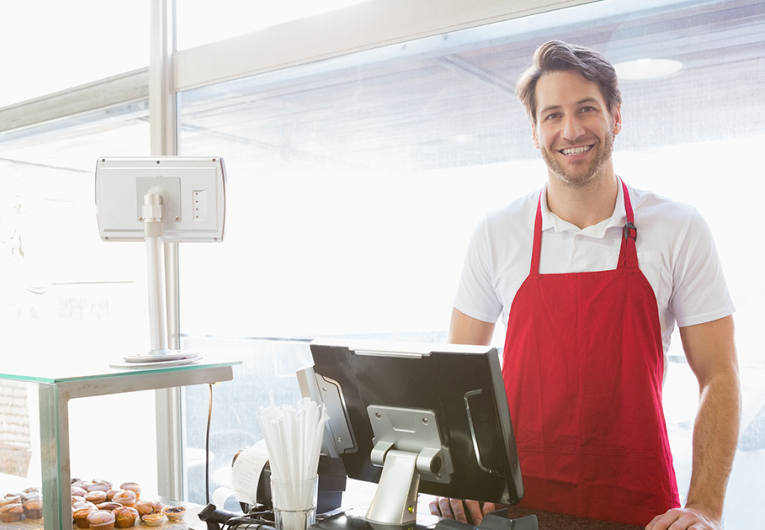
The Importance of Brick-and-Mortar Businesses
Even as ecommerce’s share of retail sales continues to grow, brick-and-mortar stores are driving the vast majority of core retail sales, according to some industry data and analyses.
Why Physical Stores Still Matter in the Age of E-Commerce
“In-store shopping isn’t just about picking up a needed item — it’s a social experience and an opportunity to physically gather with friends,” declares an article on the MIT Sloan School of Management website.
“People of all ages enjoy touching and trying out new products,” writes MIT senior lecturer Sharmila C. Chatterjee. “While online shopping may be convenient, shopping in-person provides valuable social interaction and immediate gratification when shoppers leave with products in hand.”
Physical stores allow customers to connect with your brand in ways digital channels can’t replicate. For small businesses, this makes brick-and-mortar locations more than just a sales outlet — they’re a powerful marketing and engagement tool.
Enhancing the In-Store Experience Alongside Online Shopping
Customers want a cohesive experience between online and in-store experiences, says MIT’s Chatterjee. Work on ensuring that your in-store experience is just as streamlined and engaging as the online one is, she adds.
Make sure to coordinate in-store and online inventories so that a customer who comes in looking for a product can fulfill the instant gratification they came in for.
“Nothing is more frustrating than going all the way to a store only to find that what you want to buy is unavailable,” she says.
The Value of Physical Stores for Retailers
Though AI tools for shopping continue to grow in popularity and e-commerce sales growth outpaces physical, retailers cannot neglect brick and mortar, explains Jon Copestake, global consumer senior analyst for Ernst & Young (EY).
“Stores are valuable assets,” Copestake said in an article posted by CX Dive, sister publication to Retail Dive. “If you were to consider cutting or eliminating store footprints because of the rise of online and the rise of AI buying, etc., then you may be missing a significant trick.”
The EY AI Sentiment Index, which surveyed 15,000 consumers globally, found that 3 in 5 consumers already use AI to shop. However, he says, only a small portion will trust AI to make that purchase for them.
The grand majority — 94% — of consumers make purchase decisions in a store after browsing across channels, according to the EY poll.
How Physical Stores Drive Product Discovery and Loyalty
There is also research that indicates customers are discovering new products in physical stores. According to eMarketer, U.S consumers are most likely to discover new products in physical stores, beating out social media and retailer websites by a large margin.
The growing interest in physical stores stands out among younger generations, a key demographic known for their combined spending power, says a survey by ICSC, a membership organization serving the commercial real estate and retail industries.
ICSC’s 2025 holiday shopping forecast, released in October, said 92 percent of shoppers plan to spend in a physical store. Also, omnichannel shopping continues to grow in popularity, according to the poll, with 52 percent of consumers indicating they plan to take advantage of buy-online, pick-up-in-store options.
“In a sign of opportunity for emerging retailers, 80 percent of consumers are open to visiting new stores or trying new brands,” says the ICSC.
Customer Experience Remains Key for Brick-and-Mortar Success
Holiday shoppers will be seeking value and experiences this season, the ICSC survey said.
The customer experience at physical stores remains essential, says analyst Anjee Solanki, national director of retail services and practice groups at U.S. Colliers.
“The role of brick-and-mortar has evolved beyond transactions,” she explains in a Retail Dive article by senior reporter Daphne Howland.
Retailers that continue to invest in experiential elements, store design and digital tools are better able to drive loyalty and conversion, Solanki adds.
“To stay competitive, brands must continuously reimagine the in-store experience as part of a seamless omnichannel strategy that meets rising consumer expectations across every touchpoint.”
Learn More About Boosting Customer Experience in Your Store
To read more about boosting customer experience at your store, check out How to Build and Keep Customer Loyalty in Your Small Business.
The trends, insights, and solutions you need to grow your business.
By signing up, you’re subscribing to our monthly email newsletter, The
Wire. You may unsubscribe at any time.
Your information stays safe with us. Learn more about our privacy
policy.











![[#MSP_NAME#] Logo](/themes/sparklight_business/images/transition-logos/migration-banner-logo-[#MSP_CD#].png)
